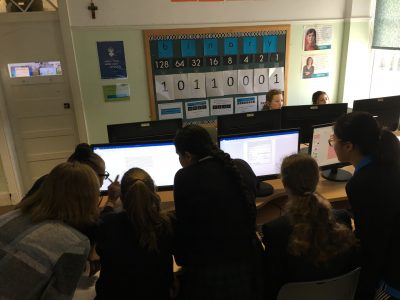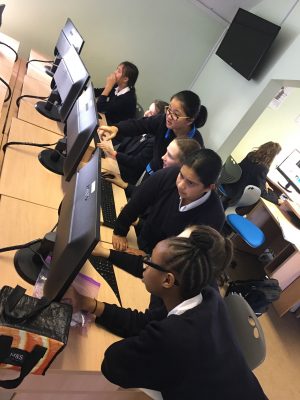The National Cipher Challenge 2017
The Mathematics Department is again excited to be taking part in the National Cipher Challenge, a nationwide, online codebreaking competition run by the University of Southampton which this year runs from 5th October 2017 to 4th January 2018.
Their website says, ‘The competition is a great extension activity (or a fantastic maths club project) that can be tackled by students in teams or on their own. The competition has been running since 2002, and regularly attracts entries from teams at over 700 UK schools and colleges. The competition is structured as a series of encrypted messages which tell a story.
This year the competitors will be trying to unravel the mystery of Rome’s Lost Legion, which vanished in Northern Britain in 108 AD. The reason for their disappearance and the nature of the treasure they guarded has been lost for centuries.’
Head of Mathematics, Mrs Bennet, reports on the latest news from our challengers and their challenge:

Using Excel to crack this week’s Soton Cipher Competition Challenge 5
The annual Soton Cipher Competition produced an interesting challenge for our cipher teams this week, with a key word embedded using steganography. Until now, letters have been encrypted or encoded as numbers or letters, but never within a picture.
Steganography (from the Greek steganos, meaning covered or watertight) is a way of hiding a clue within, for example, a diagram. The diagram was sent in a text message as a series of 1,577 letters (E or U only), which themselves stood for either ‘Black’ or ‘White’, and which the teams started to work on during the Friday lunchtime Cipher Club.
Problem 1: how to arrange the 1,577 tiles. How can these be arranged as a grid?
Solution: Work out what numbers multiply to give 1,577. This is made slightly easier as there are only two numbers (other than 1 and 1,577) that 1,577 is divisible by, 19 and 83.
Problem 2: How to split the long string of characters into the required lengths? Should we choose 19 rows and 83 columns or 83 rows and 19 columns?
Solution: Having decided which arrangement would be most likely to spell out a word, Toluwani used her great Python skills to take the string of characters and turn it into chunks of the correct length. Python is a programming language that pupils learn during Computer Studies lessons.

Problem 3: How to take the rows of E and U letters and put them into a grid. Copying the letters and pasting them into Excel puts them, rather annoyingly, into one cell. Because the letters are different widths, they don’t align and the picture is not yet revealed.
Rejected solution: Spend all weekend colouring 1,577 squares in black and white!
Alternative solutions: Mariella King found a way, also using Python, to split the substrings into individual letters which she could then paste downwards into Excel.
Yet another way is to use the MID function of Excel, (which the girls used last year) and is described below.
The MID function takes a string of numbers or letters and splits it into individual characters and puts each one in a unique cell within Excel. For example it would take the string ‘98765’ and split it into 5 different cells 9 8 7 6 5
The function is: =MID($A1, COLUMN()-1,1)
$A1 means look in cell A1
COLUMN()-1 means take the current column number, subtract 1 (eg in column 2, 2-1 = 1, so 1st character)
The final 1 at the end instructs to take just one character at a time.
This can be copied and pasted along the columns.
This is an incredibly useful tool and it meant that Naomi and Toluwani were both able to find the hidden key word before the first deadline of midnight on Friday night.

Once the key word had been revealed in 5A, they then had to use it in conjunction with a polyalphetic cipher to decrypt challenge 5B. 5A had already alluded to this, so it was a matter of researching which polyalphabetic ciphers use a key word. The most common polyalphabetic cipher (which the teams have worked through several times) is the Vigenere cipher, but this does not use a key word. So they knew they had to look for something else, without any help from me!
I received a delighted email from them telling me of their success before the first deadline, thereby ensuring maximum marks as they go forward into challenge 6 next week.’
Categories: Senior Whole School


